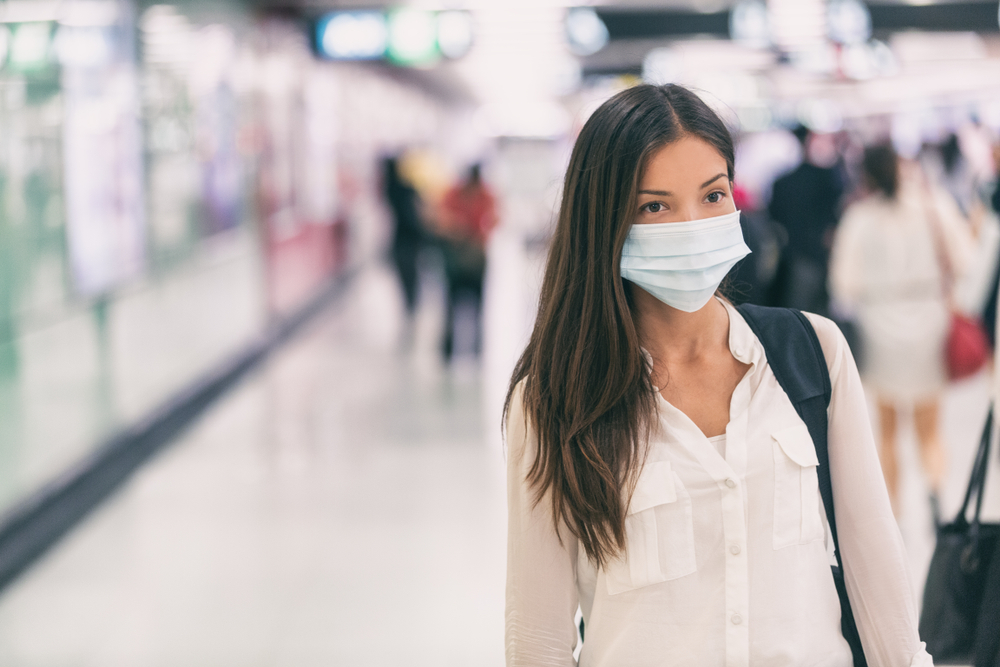Published April 1, 2022 in usatoday.com
By Jessica Kasparian, Leigh Harrington and Alison Kotch
Recommendations are independently chosen by Reviewed’s editors. Purchases you make through our links may earn us a commission.
For the past two years, we’ve all been focused on COVID, which hasn’t left much time for worry about life’s more mundane health afflictions like the stomach bug or seasonal allergies. But, now that we can take a breather, we’re more apt to notice the pollen in the air this spring.
If you find yourself sneezing more often and rubbing at itchy or stinging eyes, you’re probably suffering from seasonal allergies, which are a direct result of the new blooms and high pollen count.
To keep your allergies in check, here are some tips you can incorporate into your everyday routine to keep your allergies at bay.
Get deals and shopping advice delivered straight to your phone.Sign up for text message alerts from the experts at Reviewed.
Keep tissues on hand
For a runny nose that won’t quit, there’s only one solution: Tissues. Problem is, not all of them are enough to capture your wettest sneezes and nose-blows. You want something absorbent enough to soak up drips, soft enough so your nose doesn’t become red and irritated, and thick enough not to crumble to shreds during use. Our favorite are the Kleenex Ultra Soft Facial Tissues, which feel more like a lightweight handkerchief than an easily-tearable piece of cotton, and are soft enough to be used on watery eyes.
Get Kleenex Ultra Soft Facial Tissues on Amazon for $13.88
Relieve your sinuses with a neti pot
When your sinuses feel congested, you have post-nasal drip, or you feel like your nasal passages are too dry, try a neti pot. The SinuCleanse Neti Pot is BPA and latex free, and comes with 30 premixed saline packets that, when mixed with filtered, distilled, or previously boiled water, moisturize to prevent nasal irritation. Once you’ve prepped the water and mixed it with the solution in the provided teapot, lean sideways over the sink, place the spout in the top nostril, and slowly pour. You should then see the water escape the lower nostril and run into the sink.
Get the SinuCleanse Soft Tip Neti Pot Nasal Wash on Amazon for $12.66
Put your dirty laundry in a lidded hamper
Ever wipe your finger along your car’s hood in the springtime and see that nasty streak of yellow powder? That’s pollen, and it’s literally falling from the sky. Consider that after a walk outside or some yard work, your clothes are your car—covered in pollen. When you head back inside, It’s not a bad idea to strip down and toss your dirty clothes straight into a hamper, and this is especially true if you suffer from seasonal allergies.
You want a hamper that has a lid, so you don’t spread puffs of pollen and other airborne allergens around your home. Also try to keep on top of washing your laundry, as the most effective way to get rid of allergens like dog dander, pollen, and dust mites on clothing is to wash them in hot water.
- Get the Simply Essential Parker Hamper at Bed Bath & Beyond for $40
- Get the Wooden Handle Hamper Baskets at West Elm starting at $105
Take a shower as soon as you come indoors
Like your clothes, your exposed skin—your arms, face, legs, and hair—will be covered in pollen after time spent outdoors. Thus it follows that you should rinse off in the shower so your own self is not making you sneeze. This is even more important before bedtime, so you don’t spread allergens on your sheets and pillows.
Use allergy covers on your bedding
If allergens do make it into your bedroom, you’ll be better prepared if you use allergy covers on your mattress and pillows. Ones like the Aller-Ease Maximum Mattress Protector and Pillow Protector claim to block out dust mites, pollen, bed bugs, pet dander, and household allergens with a soft fabric casing that zippers shut over your pillows and mattress.
- Get the Aller-Ease Maximum Allergy Mattress Protector, King, at Amazon for $44.99
- Get the Aller-Ease Maximum Allergy Pillow Protector, 2-pack, at Amazon for $15.50
Stick with washable rugs, if any at all
Rugs can warm up a home and make it feel cozier, but just as with clothing and bedding, allergens infiltrate your rugs. If you can roll up your rugs and store them properly during the time of year when your allergies are the worst, perfect. If you can’t, though, we suggest switching to a machine-washable rug from Ruggable. Not only do we love how easy they are to pop in the washing machine, but also that there are hundreds of designs to choose from and plenty of size options to fit any room in your house.
Skip fresh flowers inside, except for low pollen producers
As anyone who’s ever met an Easter lily will tell you, fresh flowers are gorgeous, but they can introduce pollen to your home and cause your seasonal allergies to flare up. If you love having vases of fresh flower arrangements on your table or in other places inside your home, forgo flowers with pollen-laden stamens (think asters, daisies, and chrysanthemums) and instead opt for flowers like orchids, roses, hydrangeas, and peonies that produce relatively low levels of pollen. You can also try a dried flower arrangement or wreath, or a succulent.
- Get the Buttercream Arrangement at Urbanstems for $65
- Get the Zebra Succulent Garden at Lula’s Garden for $44
- Get the Elegant Orchid at 1800Flowers for $38.49
- Get the Inspiration Dried Flower Bouquet at Urbanstems for $95
Bathe your pets often
As lovable as your pets are, they may (innocently) exacerbate your allergies by bringing irritants into your home, just as you do when you come in from the outdoors. But, your furry friend is likely not wearing clothes that they can shed. To avoid sneezing fits during snuggle time, regularly bathe your pet and consider using a hypoallergenic shampoo. For dogs, Reviewed editor Alison Kotch recommends Tropiclean’s Papaya & Coconut Luxury 2 in 1 Shampoo and Conditioner. Made with papaya, kiwi, and coconut extract, the island-inspired blend claims to clean your dog’s fur and eliminate odors, while preventing dry skin and tangled fur. Its naturally-derived ingredients aren’t tested on animals, and it is safe for daily use.
Get Tropiclean’s Papaya Coconut Dog Shampoo & Conditioner on Amazon for $11.99
Use your face mask for chores
At this point, we’re no strangers to wearing face masks out of the house. You COVID-era masks can also come in handy when you’re doing chores around the house. Next time you’re dusting the house or mowing the lawn, slip your face mask on to act as a protective barrier between you and allergens.
Run an air purifier
Air purifiers can majorly reduce seasonal allergens in your home, and as a result, the amount of discomfort you feel.
The key is to knowing what you’re allergic to, and finding an air purifier to address those needs. According to Reviewed’s chief scientist Dave Ellerby, “Pollens tend to be on the larger end of the particle size spectrum, more than 15 microns,” he says. “Mold spores tend to be in the same, larger size range. If you have seasonal allergies, these are likely to plant pollen or fungal spores. In this case a lower-rated filter would be enough to trap most of the problem particles. If you have a year-round pet allergy, then it’s worth investing in a higher-end HEPA filter to trap the smaller particles that cause pet allergies.”
For seasonal allergies and pet allergies, we recommend the Winix 5500-2 air purifier, because, it uses a True HEPA filter that’s easy to replace; plus, it gets rid of odor along with allergens. To get the most use out of it, put it in the room where you spend most of your time, run it often, keep up with replacing the filter, and make sure your windows are shut while it’s running—shutting your windows is a good practice for someone with allergies, anyway.




